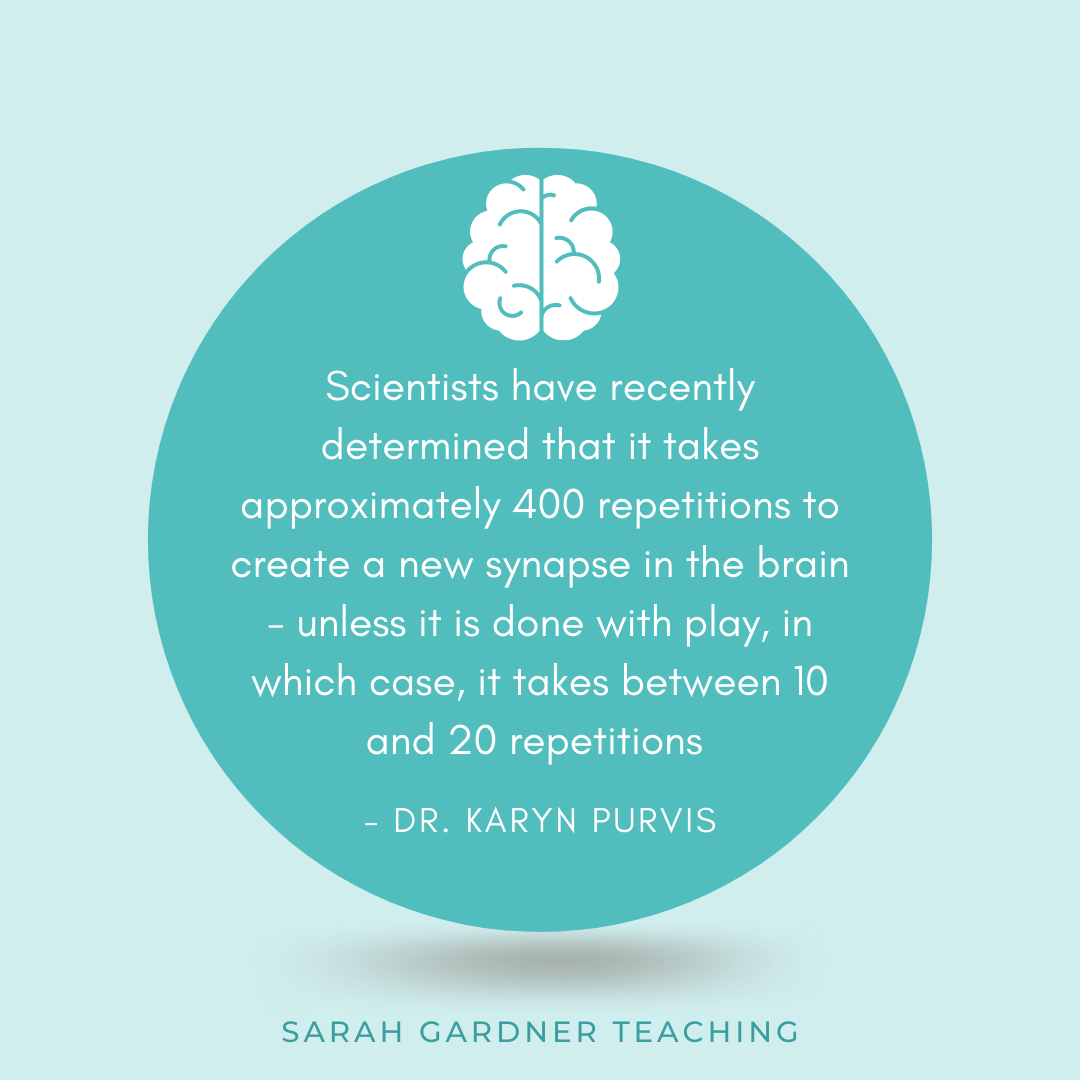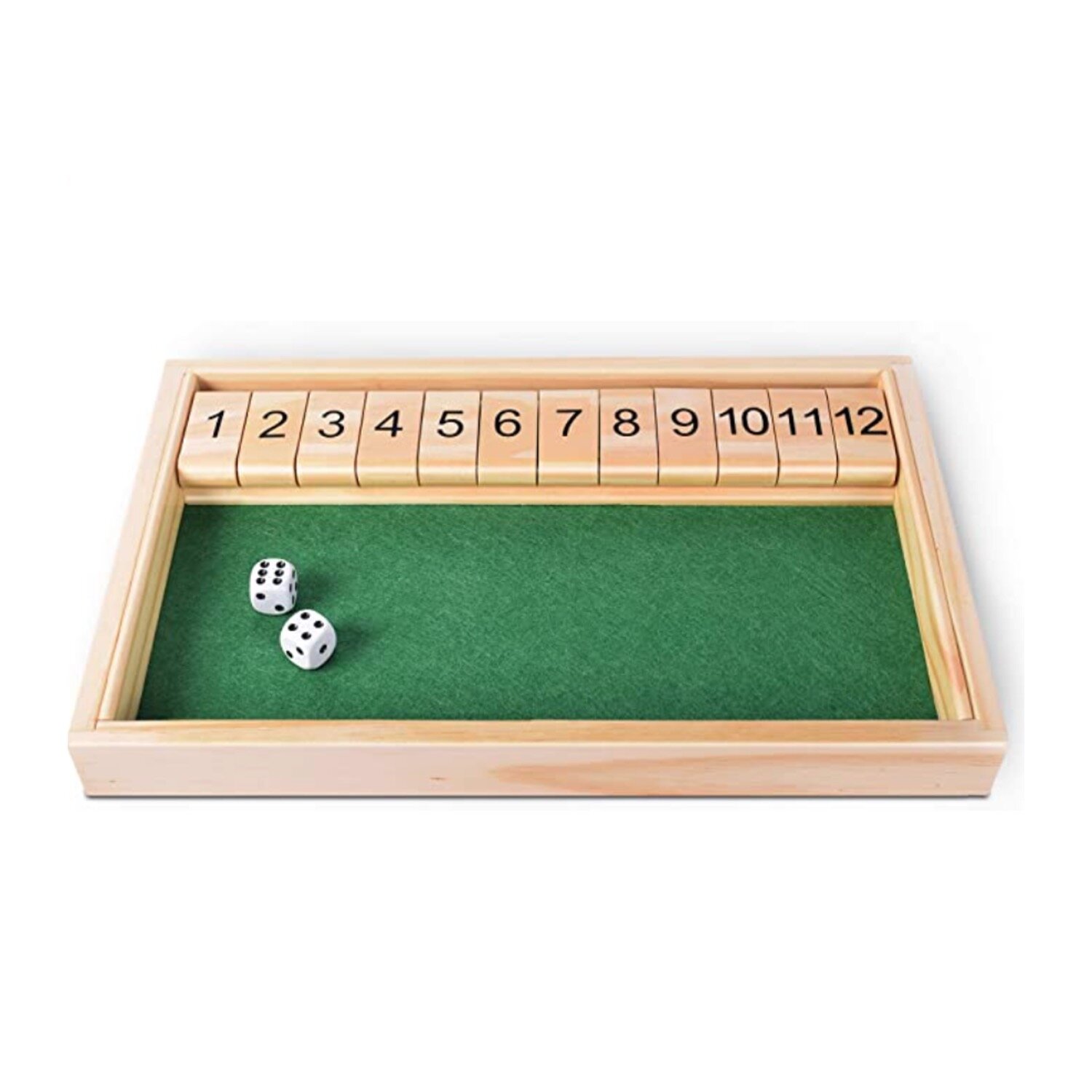Number Sense Activities: 10 Terrific Math Games You Should Try
Have you ever felt like you’re just not that good at teaching a subject? For me, that subject was math. Don’t get me wrong, my students would leave me knowing their addition facts and shapes and how to tell time to the hour and half-hour, but I felt like their deep, conceptual understanding just wasn’t as strong as it should have been. One year into teaching first grade, I decided to dive head-first into researching the best ways to build number sense so that students didn’t just know how to replicate a process, but that they actually understood the process.
Through my research, I dove deeper into how the human brain learns math. As it turns out, there’s a very sequential set of skills that need to be mastered before we can truly understand math on a conceptual level. Oral counting must be mastered before one-to-one counting can take place. Then, we develop our sense of cardinality (the ability to know that the last number/object we count is the total amount represented). And all of these things have to take place before we can even start to understand the relationship between numbers or begin to manipulate them through addition and subtraction. To say I was mind-blown would be an understatement. I finally understood why some of my students just didn’t. get. it.
Incorporating a dedicated time for math games into my daily schedule was a GAME CHANGER when it came to conceptual understanding in my students. If one of my students needed work on one-to-one correspondence, they could play a game for that! If another student needed practice subitizing, they could play a game for that! If a student needed more of a challenge, I had a game for that!
“Math Game” time was the best way to customize math experiences for each of my students and gave me more one-on-one time with those who were struggling. And when I had time to spend observing my struggling students, I was able to troubleshoot the “gaps” in their math journey and help fill them, allowing them to be more successful during our whole group lessons.
If you’re finding yourself thinking, “but I just don’t have time for math games” - let me leave you with two of my favorite quotes about play.
I hope that you find a few ideas for math games in your classroom! Please note that this post contains affiliate links, meaning, at no additional cost to you, I will earn a small commission if you click through and make a purchase.
Shut The Box
Shut the Box is one of my favorite math games because it targets so many skills at one time. Play begins with all of the number tiles flipped up, or “open” and the goal is to “shut the box.” First, students roll the two dice and find the sum (skills: subitizing, composing numbers). Then, they look at the numbers that they have available and “shut” the numbers that make the sum they rolled. Things start to get interesting as play continues and more numbers have been used. For example, if a student rolls a 3 and a 4, they are trying to use the numbers they have left to create the number 7. If the numbers 7, 3, and 4 are already used, students have to think of another way they could make the number 7 (2 & 5, 1 & 6, etc). I love how this game encourages flexible thinking and builds fact fluency. In my classroom, I used the four-player version, but a one-player version is a great option as well. For students who struggle to decompose and re-compose numbers into different combinations, I provide small manipulatives. They build the sum with their manipulatives and then “split” them in different ways until they find a new combination that works with the numbers they have available on their board. This is definitely a game that needs to be modeled over the course of a few sessions before students start to pick it up, so keep that in mind as you plan!
Sum Swamp
Sum Swamp is a charming game to practice beginning math skills such as simple addition and subtraction. Players roll the dice (numbers and operations) to reveal the equations to solve. This game is superior to some other addition and subtraction games I have seen because it involves elements that make the students feel like they are playing a game, such as a crocodile shortcut and the endless loop. Sum Swamp also offers a review of odd and even numbers. I think your littles will love it!
Shelby Snacks
Shelby Snacks is an adorable game that targets number recognition, one-to-one correspondence, and cardinality. The point of the game is to help Shelby the Pug find the bones that she has buried. Students spin the spinner and will then count the number of bones they spun into their dog bowl. They will use tweezers shaped like Shelby to pick up each bone, which is great for targeting fine motor control. To differentiate this game for more advanced students, you could swap the number spinner for two 6-sided dice. Instead of spinning a number, they would roll to find the sum of the dice.
I Sea 10
I Sea 10 is a game that helps children practice adding two or more numbers together to come up with 10. The student with the most combinations will win the game. To add in a fun game element, there are ten cards with sharks on them, and if you draw one of those, you have to put all of your matches back. I like to introduce this game after our unit on making 10 - it’s a great way to practice fluency.
I See 20
Once students have mastered combinations to 10, I like to challenge them with I See 20! The rules of the game are the same, but this time, they’re looking for ways to make the number 20 instead of 10! This is a great way to differentiate for students who are ready for a bit of a challenge
Lil’ Lemonade Stand-Off
Lil Lemonade Stand-Off wins in the cuteness category. In this game, the player draws an order card, attempts to memorize it, then flips the card face down again. From memory, they will recreate the order with the small lemonade accessories. The lemonade tray is formatted like a ten frame, so not only does this game target memory, it also targets the skill of subitizing! Students have to hold the order in their minds while they build it, which strengthens working memory, an often-overlooked skill that is SO important to long-term success with mathematics. To differentiate for your advanced students, challenge them to write addition sentences to match their orders.
Under the Sea Shells
Word problems can be such a challenge. Under the Sea Shells makes solving word problems concrete. The word problems are differentiated and include addition, subtraction, and solving for missing addends. Missing addend problems tend to trip my students up and take a lot of practice to master, so I love that I can specifically target them with this game. Your students will love modeling each problem with the cute little manipulatives included with this game.
Addition Machine
Your kids will love this magnetic addition machine. You place the number strip, buckets, and funnel on a magnetic surface (I used my whiteboard), and then the students can visually represent addition problems. It comes with two different colors of balls represent the two different addends. Students can then use one-to-one correspondence to double-check themselves to make sure they solved the equation correctly, knowing how many of each color they were supposed to have. This tool by itself is not a game. However, I turned it into a game by adding some foam dice and for students to roll to get the two different addends. I also like how the tool adds in some movement and coordination.
Tiny Polka Dot
Tiny Polka Dots is a great value for your money because it includes sixteen games to help build upon math knowledge. The game was created with 3-8 year-olds in mind. However, there are ways to make extensions so that older kids or young students that need a challenge could still benefit. The games include war, concentration, matching, and many others.
Candyland
I love using Candyland in the classroom! I think I have a total of 6 Candyland board games that I’ve made for different skills. Years ago, Target ran a sale and I was able to snag each board game for $5! To turn Candyland into a math game, take each card and write a math fact on it. On the “double” cards, I like to write related facts (ex: 3+3 on one square and 3+4 on the other). For each different board game I bought, I created a different set of cards. One targets addition and subtraction facts within 10, another targets +10 and -10 facts, and another targets 3 addend addition.
Jenga
Just like Candyland, Jenga is another great way to practice math fact fluency. Everyone knows Jenga as the game where you keep removing wooden blocks until it comes crumbling down. However, to use this in the classroom, all you have to do is use a Sharpie to write math facts. Each time they remove a block, they answer the math fact. I would recommend having students play this one on the floor or carpet so the “fall” isn’t too distracting to the rest of the class. Just like with Candyland, I snagged multiple Jenga sets on sale and created a bunch of differentiated versions!
I hope you leave here today with a few new games and ideas for differentiation!


















